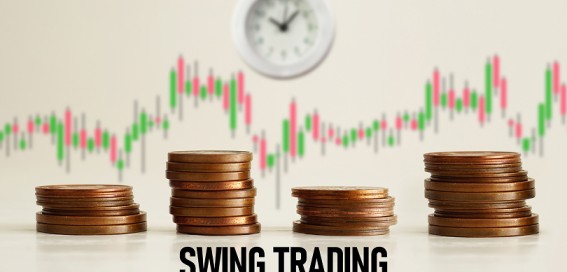Under technical analysis, moving averages are crucial for traders and investors to recognise trends in financial markets. These calculations smooth out price ups and downs, showing an average that change over time. This process helps present a clearer view of the market’s trajectory, aiding participants in making better-informed choices. Grasping the definition of moving averages and instances where they can be employed is vital for anyone aiming to enhance their trading strategies.
What is a Moving Average?
A moving average is a statistical method that computes the average of a chosen set of prices, usually closing prices, over a defined time frame. The average adjusts as new information comes in, providing an ongoing view of market trends. The main purpose of moving averages is to cut out short-term price jumps and show the overall trend more clearly.
Types of Moving Averages
There are several types of moving averages, each with unique characteristics that make them suitable for various market conditions:
- Simple Moving Average (SMA): The SMA is derived by averaging a series of prices over a predetermined timeframe, treating each data point equally. Simple Moving Averages highlight trends by smoothing out price variations, which helps determine the market direction more easily.
- Exponential Moving Average (EMA): The EMA emphasises more recent prices, allowing it to respond more swiftly to recent market changes.
- Weighted Moving Average (WMA): The WMA prioritises the most recent information by applying different weights to its data points.
Begin your investing journey today. Your Demat account is the first step.
How to Use Moving Averages
The effective use of moving averages relies on the specific context in which they are utilised. Traders employ moving averages to recognise trends, determine support and resistance areas, and generate trading signals.
-
Identifying Trend Direction
The primary use of moving averages is to determine the market’s overall direction.
- Uptrend: When the price is consistently above the moving average, it suggests a bullish market.
- Downtrend: When the price continuously stays below the moving average, it indicates a bearish market.
-
Crossover Strategy
A commonly used method is the moving average crossover. When a moving average with a shorter duration (like the 10-day SMA) rises above a moving average with a longer duration (such as the 50-day SMA), it generates a buy signal. Conversely, when the shorter-period moving average falls below the longer-period moving average, it indicates a sell signal. This crossover method is one of the most widely adopted techniques for using moving averages to identify trends.
-
Support and Resistance Levels
Moving averages can be used as support and resistance levels that change over time. When prices go up, they often bounce back off the moving average, which acts as a support level. In a falling trend, on the other hand, the moving average may act as resistance, making it hard for prices to go above it.
Why Moving Averages Are Useful in Identifying Trends
Moving averages help recognise market trends by smoothing out short-term volatility and offering a clearer view of the market’s general trajectory. This transparency is essential for traders who depend on technical analysis. By offering insights into market momentum, moving averages assist traders in predicting potential reversals and continuations.
While moving averages are powerful, combining them with other indicators can enhance their effectiveness.
- Relative Strength Index (RSI): Helps identify overbought or oversold conditions.
- Bollinger Bands: Use moving averages and standard deviations to indicate market volatility.
- MACD (Moving Average Convergence Divergence): Uses moving averages to show changes in momentum.
Moving Averages in Different Market Conditions
Varied market conditions call for distinct moving average approaches.
- In trending markets, longer moving averages are more effective as they reflect the overall trend.
- In ranging markets, shorter moving averages are better suited for spotting rapid trading opportunities.
Moving Average Example in Real-World Trading
Suppose you’re tracking a company’s stock price for 10 consecutive days. The closing prices are:
100, 102, 101, 105, 107, 110, 108, 111, 112, 115
The process of calculating a 5-day Simple Moving Average involves these sequential steps.
- Day 5 SMA = (100 + 102 + 101 + 105 + 107) ÷ 5 = 103
- Day 6 SMA = (102 + 101 + 105 + 107 + 110) ÷ 5 = 105
- Day 7 SMA = (101 + 105 + 107 + 110 + 108) ÷ 5 = 106.2
The calculation method applies five recent closing prices daily with the same series. The moving average remains current with market developments because new prices replace the oldest daily. Moving averages receive their value for trend detection through the consistent daily update process.
Limitations of Moving Averages
Though moving averages can assist in identifying trends, they also come with specific limitations.
- Lagging indicator: Moving averages rely on past data, which results in them lagging behind the current market price.
- False Signals: Moving averages can generate misleading signals in markets with high volatility, which may lead to potential losses.
- Whipsaws: In markets lacking clear direction, prices often hover around the moving average, complicating the identification of distinct trends.
- Parameter Sensitivity: How well a moving average works depends on your chosen time frame. It may react too quickly if it’s too short; if it’s too long, it may respond too slowly.
- Inability to Predict Future Trends: Moving averages solely represent past data and do not serve as forecasting tools; they can miss sudden market changes.
- Market Condition Dependency: Moving averages perform well in trending markets but are less dependable in erratic or sideways markets, where prices fluctuate within a defined range.
Optimising Moving Averages for Better Results
Traders can enhance moving averages by modifying the duration or merging various moving averages.
- Shorter durations yield faster signals but raise the likelihood of receiving false signals.
- Longer durations provide more dependable signals, although they tend to lag the market.
Testing various time frames and integrating several moving averages can assist traders in achieving the best compromise between sensitivity and dependability.
Conclusion
Moving averages are one of the most adaptable instruments in technical analysis. They assist traders and investors in averaging price data to highlight market trends, support and resistance zones, and possible entry or exit points. By understanding the concept and applications of moving averages, traders can improve their ability to use them effectively. Moving averages provide valuable insights, whether by recognising crossovers, support and resistance levels or combining them with other indicators. Simply moving averages improve trend visibility, making them vital to any trading approach. For those dedicated to refining their market analysis skills, mastering how moving averages assist in trend recognition is a key milestone to achieving consistent success.












